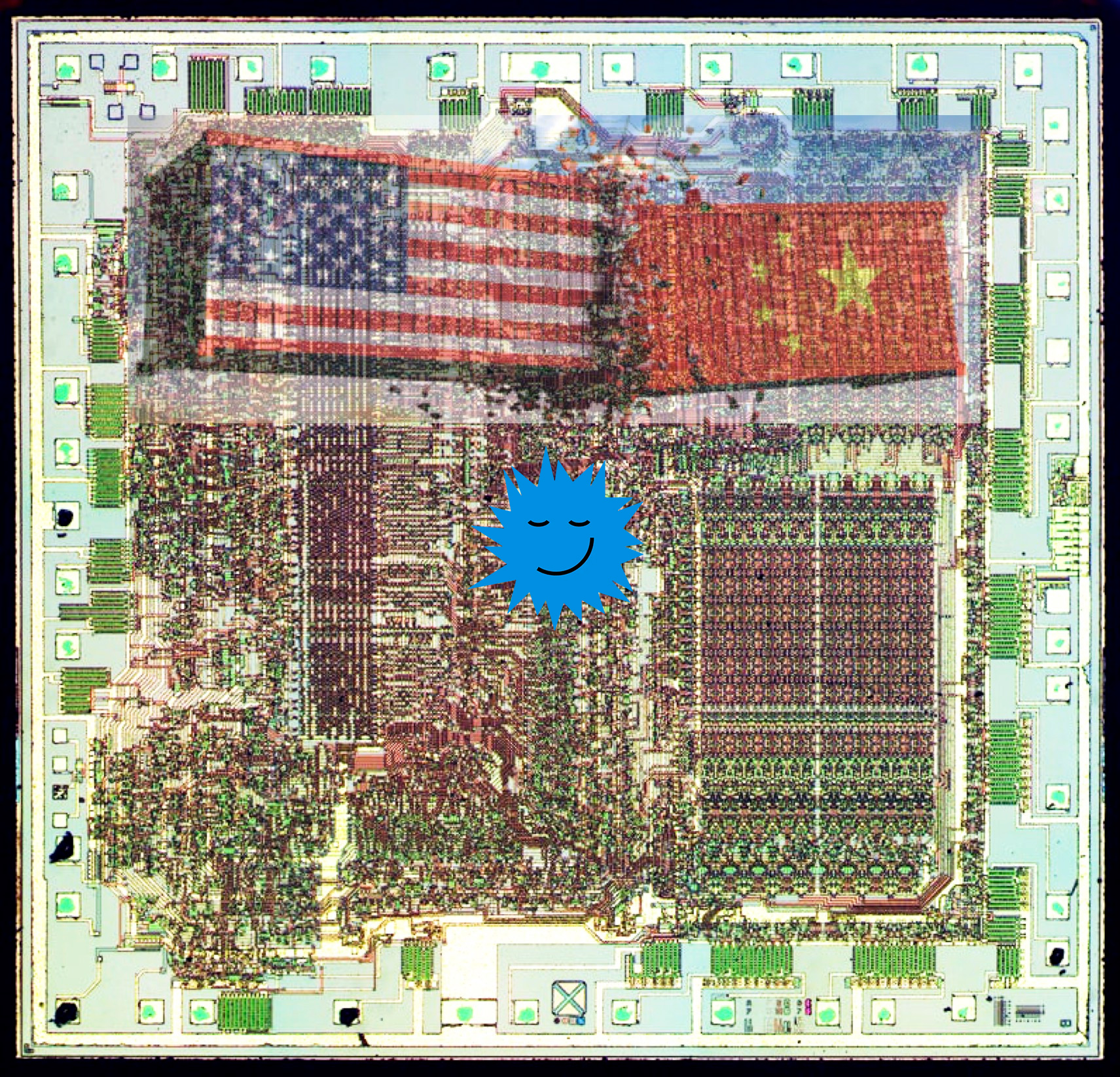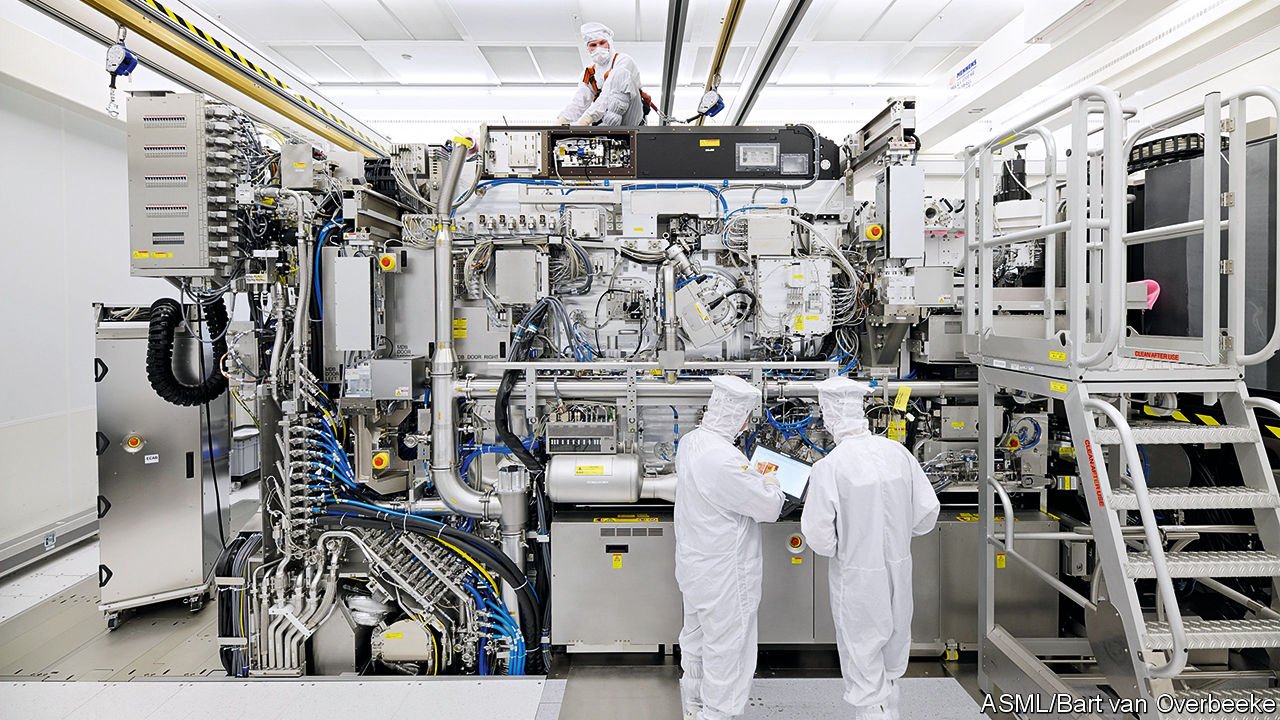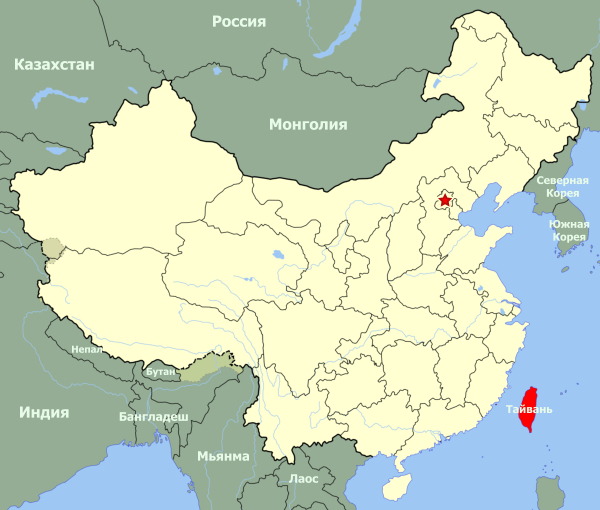Chip Wars. Who will control chip production in the 21st century?

At each stage of human development, different resources and technologies come to the fore. In the 20th century, oil was the main strategic resource. Now – advanced microelectronics.
For example, one country can block another country’s access to the production of advanced microelectronics in order to limit its military and economic development. This is what the US is trying to do with China, prohibiting the production of Huawei chips at the factories of the Taiwanese company Taiwan Semiconductor Manufacturing Company (TSMC).
But this is a very dangerous move, because in reality the United States is not just threatening Huawei, but is trying to hold back the development of an entire country. It is believed that the previous US administration did not calculate the possible consequences and did not understand what it was getting itself into.
If rates start to rise, then China can use its influence and block already American companies from cooperation with Taiwanese TSMC. This will be a powerful blow, because TSMC is the manufacturer of the most advanced microelectronics in the world, writes Steve Blank on the pages of the publication War on rocks…
It is unlikely to come to this, but the example of TSMC demonstrates heavy dependence of the American economy on a single supplier… TSMC chips are found in a variety of modern electronics, including nearly every weapon system created in the 21st century. About 60% of TSMC chips are now shipped to American companies.
TSMC Technology Leadership
TSMC’s technological leadership at this stage does not raise any doubts. Intel’s stagnation dragged on for a long time, and the company made the fatal mistake of refusing to develop the ARM architecture (see “Intel crashed”).
Record Apple M1 Performance – not only Apple’s achievement in SoC design, but also a demonstration of the advanced technical capabilities of TSMC, which is engaged in the production of microcircuits.

In November 2020 TSMC completed construction factories in the Science Park of South Taiwan, where it will start producing semiconductor products at 3 nm standards. Factory cost $ 19.5 billion
At the moment TSMC serves clients from all over the world, and Apple is one of the main ones. Most likely, she will also become the first customer for 3 nm microcircuits at the new factory. Earlier Apple ordered processors only for iPhones, and now also for laptops.
Even Intel is planning to order some of the chips from TSMC. Perhaps, in the future, it will be more profitable to give the production of individual Intel processors to TSMC.
In June 2020, the US Department of Commerce decided microelectronics manufacturers using US technology and equipment to apply for a license prior to fulfilling orders for Huawei. This ruling specifically targets TSMC, which is Huawei’s main supplier of advanced chips.
In this conflict, TSMC has so far chosen the side of the United States as a closer partner. By the way, in May 2020 TSMC announced construction of a $ 12 billion factory in Arizona, where it will manufacture some of the most advanced microcircuits. Construction is scheduled to begin in 2021, with actual production no earlier than 2024. However, this is rather a symbolic step, because the American factory is four times smaller than the largest TSMC factories, and its production will amount to only 3% of the current capacities in Taiwan, where four large production hubs of 6-7 factories produce more than 12 million plates per year (equivalent to 300 mm plate).
By the way, on the market of equipment for the production of microelectronics also has a kind of “monopolist”just like TSMC. It is the Dutch ASML, the world’s only manufacturer of steppers for photolithography in deep ultraviolet (EUV).

Stepper ASML
In 2018, ASML received an order for the EUV scanner from Huawei, whose factories are currently a couple of generations behind TSMC’s current level. Under US pressure, the Dutch government has not yet granted ASML an export license.
Chinese microelectronics
Both America and China are trying to stimulate the production of microelectronics. For example, in the USA they are discussing government subsidies to domestic producers for $ 25 billion… For comparison, China allocated almost five times more in subsidies for microelectronics manufacturers in 2019: $ 73.5 billion, in equivalent.

On the other hand, China’s needs in this industry are many times higher. Ten years ago, China admitted that the initial economic boom in low-cost industrial production was over. Labor has risen too much. As a result, we had to switch to the release of more sophisticated and complex products. But most of these products require specialized electronics, and China lacked the manufacturing capacity to make them. The chart below shows that China currently consumes approximately 61% of world production of microelectronics both for the domestic market and for export production. In 2018, $ 310 billion worth of microelectronics was imported. China realized an urgent need to develop its microelectronics. Otherwise, it is a strategic vulnerability.

Accordingly, two state programs were adopted for the development of microelectronics, which are now being consistently implemented:
The second document provides for the full satisfaction of the demand for microelectronics by 2030. Huge funds are allocated for these purposes. In addition to the aforementioned government subsidies, private investments are also attracted to venture capital funds. More than 70 investment programs have already been implemented, including the construction of factories and the purchase of foreign companies. As a result, China’s share in global microelectronics production increased from 0% to almost 16%.
In the future, China plans to invest in chip design software, advanced materials and semiconductor manufacturing equipment. And the leaders of the People’s Republic of China see the US actions as aimed at preventing China from taking its rightful place in the world.
Independent island
The question now is whether China will view the action against Huawei as sanctions against one company or as an attempt to prevent China from gaining access to advanced microelectronics production. If the second option, then a rapid escalation of the conflict is possible, up to a military threat to Taiwan.
The island of Taiwan is only formally an administrative unit of the PRC, but it is important to understand – the territory of the island has never been controlled by the PRC… This is a completely independent, democratic state (by the way, with a woman president).

The complexity of the problem lies in the legal incident of who exactly should be considered the legal successor of the Republic of China, proclaimed in 1911. Each of the parties considers itself to be the legal successor. Thus, no one can recognize the “independent state of Taiwan”, not even Taiwan itself (they officially call themselves the Republic of China).
In practice, in recent decades, China has not viewed Taiwan as a threat and has not particularly encroached on its de facto independence. But the problem with TSMC can rekindle conflict on a new level.
What to expect
Analysts War on rocks warn that China may draw some lessons from previous US moves when US interests were at stake. From the point of view of some Chinese politicians, America is drained of endless wars in Iraq and Afghanistan and is unlikely to fight again. They see the United States as being politically divided, distracted by the COVID-19 pandemic, and unlikely to risk American lives for something as abstract as chip factories.
China has seen that over the past two decades, its aggressive actions have elicited a rather sluggish response from the American side – mostly just “paper protests,” that is, verbal statements of concern and nothing more.
In 2012, China occupied the Scarborough Shoal off the coast of the Philippines (Scarborough Shoal on the map below). Washington just expressed concern about this, but did not dare to take concrete action. As a result, new Chinese bases with surface-to-air missiles, cruise missiles and fighters are now deployed on the nearby Spratly Islands, altering the balance of power in the western Pacific. Now, any attempt by the United States to control the airspace in the area will face serious resistance and heavy losses.

Until recently, Hong Kong as a Chinese territory had guarantees of freedom of speech, assembly and press, but now China intend to cancel them… Again, the US is doing nothing but “expressing concern.” The day after the announcement of restoring order in Hong Kong, Chinese Prime Minister Li Keqiang omitted the word “peaceful”when he said about “reunification” with Taiwan.
The lack of an effective American response to these events shows the Chinese leadership that the United States does not want violent interference in Asian affairs. It will give courage to China’s next move, analysts say War on rocks…
China’s near-term goal is to secure a stable supply of chips. They are probably thinking now how to respond to the latest sanctions against Huawei. China may wish to avoid escalation and negotiate. For example, they can opt out of sales of Huawei networking equipment (34% of revenues), while retaining the consumer business.
Alternatively, Beijing could force Taiwan to fulfill its manufacturing orders and block the export of chips to the United States, thereby damaging American industry. It is possible to disable TSMC factories by sabotage or direct attack. China could consider nationalizing two less advanced TSMC factories in mainland China, or launching targeted missile attacks on factories in Taiwan, knocking out one plant a week, for example.
Though these more aggressive scenarios don’t seem very realistic.
Perhaps the more likely option is a trade war coupled with a major disinformation campaign. Now the trade turnover between Taiwan and China is about $ 150 billion, and with the United States – about $ 100 billion. This gives the PRC leverage over Taiwan.
In any case, it is unlikely that the United States will declare war on the PRC over some factories, despite their strategic importance.
conclusions
The controversy surrounding Huawei’s ban on placing orders at TSMC factories has highlighted how vulnerable the US industry is to the loss of its sole supplier of advanced microelectronics. If this issue is not resolved through negotiations, then China may perceive these sanctions as an economic war. Then the escalation of the conflict is possible, right up to a real invasion.
In the old days, who would have thought that the world would face the threat of a real war over microelectronics?
Advertising
Our company offers for rent servers with processors from Intel and AMD. In the latter case, these are epic servers! VDS with AMD EPYC, CPU core frequency up to 3.4 GHz. Create your configuration in a couple of clicks, the maximum configuration is 128 CPU cores, 512 GB RAM, 4000 GB NVMe.






